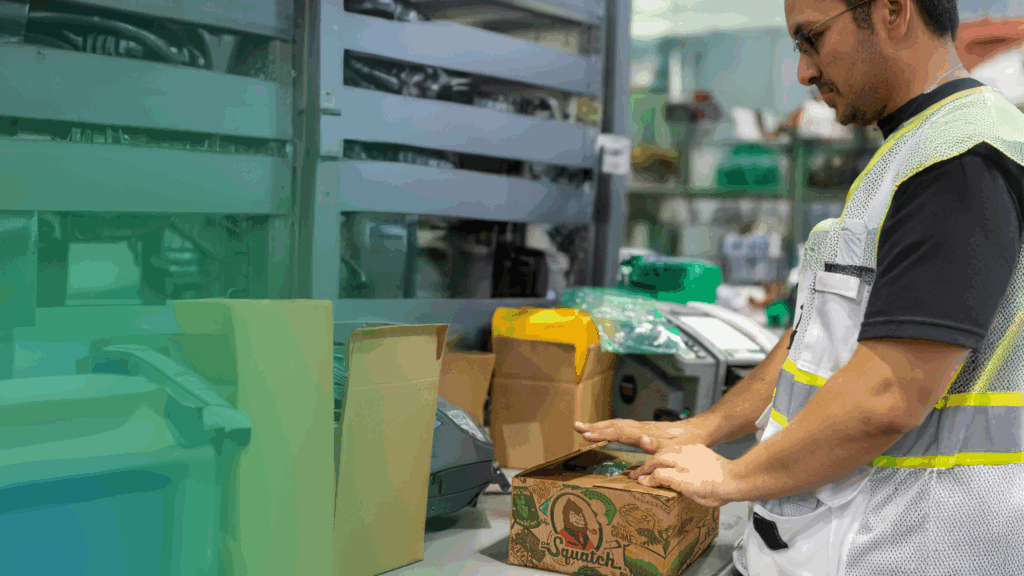Safety nets aren’t just for folks jumping out of airplanes; every ecommerce business owner should have safety nets built into multiple levels of their operations to deal with an industry that is always in flux. One aspect where this is particularly pivotal is inventory. If your ecommerce business is always growing—as you would hope—then you need to have inventory that accounts for a steady increase in sales. However, if you have new product launches or special promotions, you’ll need more inventory on hand to satisfy demand. Then there’s always peak season, other seasonal fluxes, and unpredictable spikes in orders, which create a need for emergency stock past what you normally account for. To keep your business growing and customers happy in these times, you need to have a safety net known as “safety stock” to sustain your company.
What is Safety Stock?
Safety stock is a type of extra inventory an ecommerce business keeps in reserve to cover a surge in demand or protect itself against unexpected supply chain issues. Manufacturers can also keep safety stock to cover the ecommerce businesses they work with. In the case of the latter, reshipments of products can resupply a business’s warehouse or fulfillment center much faster.
Why Keep Safety Stock?
Whether it’s a snowstorm stopping your manufacturer reshipment from reaching you, a celebrity unexpectedly endorsing your product on social media, or anything in between, sometimes stalls in the supply chain or surges in demand can create problems with your normal order fulfillment process.
If you do not keep safety stock as a form of backup inventory for when your warehouse or fulfillment center unexpectedly runs out of product, customer orders become backorders. That can test the patience of the average customer, especially if the backorders are long or keep getting extended. And that, naturally, impacts customer satisfaction. The result could lead to negative reviews, loss of return customers, or canceled orders altogether as buyers take their dollars to another ecommerce business.
How to Calculate Safety Stock
It is crucial that every ecommerce business maintains some safety stock; however, you want to be careful with the quantity so you don’t break the bank on the storage fees your warehouse, fulfillment center, or manufacturer may charge for you to store them. Luckily, you can take the guesswork out of this decision with a special formula that calculates the ideal number of units to keep in stock for each SKU.
You actually have all the info you need to calculate safety stock. What it comes down to is determining the difference between your average supply/demand scenario and the most intense supply/demand scenario. By utilizing this info and formula, you will determine the most-advisable quantity of inventory to keep on hand for each product, thus minimizing the risk of backorder or stockout if an influx of unexpected orders comes in or there is a hold up with resupply of SKUs from the manufacturer. The safety stock formula is not the only excellent equation you should stow in your ecommerce business back pocket. The reorder point formula is also a fundamental tool every entrepreneur should keep on hand.
What is a Reorder Point?
People frequently set up alerts on their phones to remind them of important to-dos, meetings, or occasions. A reorder point (ROP) is the same kind of concept. It is a trigger that goes off when a SKU reaches a minimum, predetermined threshold of units within your warehouse or fulfillment center. When you hit that threshold, it is time to order more from the manufacturer or supplier. There are many factors to take into account when setting your reorder point. For example, consider peak season, upcoming sales, marketing campaigns, new product launches, etc. These may all trigger increases in demand. Looking at historical data is also key. All this information is important to take note of. That being said, if we’re talking calculations, reorder points are derived from combining your safety stock with demand during lead time.
Demand During Lead Time
Lead time is the amount of time it takes new inventory to arrive at your warehouse or fulfillment center from your manufacturer or supplier. Ergo, demand during lead time is the demand during the time it takes your new inventory to arrive. To calculate this number, you’ll multiply your average units sold per day during a specific time of year by the number of days in your ecommerce business’s typical lead time.
For example, let’s say your ecommerce business sells jeans. You’ve noticed that every year you get a surge in jean sales in late September in honor of Bruce Springsteen’s birthday. At this time of year you sell an average of 100 pairs of jeans per day. It takes 10 days for your manufacturer to ship a refill of jeans to your warehouse or fulfillment center. As a result, your demand during lead time formula would be:
10 Days x 100 Avg. Units/Day = 1,000 Units Demand During Lead Time
But, the manufacturer also needs 12 days to complete the order and you’ve noticed that your manufacturer is running a week behind on shipments in general this year. That changes the lead time you need from 10 days to 10 + 12 + 7, which equals a 29 day lead time. So your formula becomes:
29 Days (10 + 12 + 7) x 100 Avg. Units/Day = 2,900 Units Demand During Lead Time
Managing Inventory
All the above formulas can definitely help you have the right stock of SKUs to account for supply chain and demand irregularities, and the always-welcome boom in orders. What matters more, though, is a proper inventory management system. We’re not talking about a detail-oriented fella walking around your warehouse with a clipboard; we mean advanced inventory management software that makes stockouts and backorders easy to avoid because alerts notify your ecommerce business of reorder points based on real-time data.
Inventory management software is as vital to an ecommerce business as a sword is to a knight or a blender is to a smoothie store. ShipMonk’s inventory management system provides all the information you need about your inventory in a one-stop-shop platform that dominates the ecommerce industry in terms of data, transparency, and integration. Fulfillment has never been easier with our interface, which grants order, warehouse, and inventory management all in one place.
Manage That!
As an ecommerce business owner, safety stock for unforeseen delays and unusual spikes in demand is a pivotal part of your emergency preparedness plan. Like anything in life, though, the trick is balance i.e. keeping enough inventory on hand to tide you over in these situations while not clogging up your warehouse or fulfillment center with an overabundance of SKUs that use up your space and cost your storage fees. Enter a 3PL that has the advanced software, facilities, and staff to help you know when to reorder and how much.
With 11 state-of-the-art fulfillment centers and counting, and an inventory management platform that dominates the ecommerce software world, ShipMonk is here to help you manage your inventory whether you have one SKU or one thousand. Contact us today for a custom quote on services for your ecommerce business.





